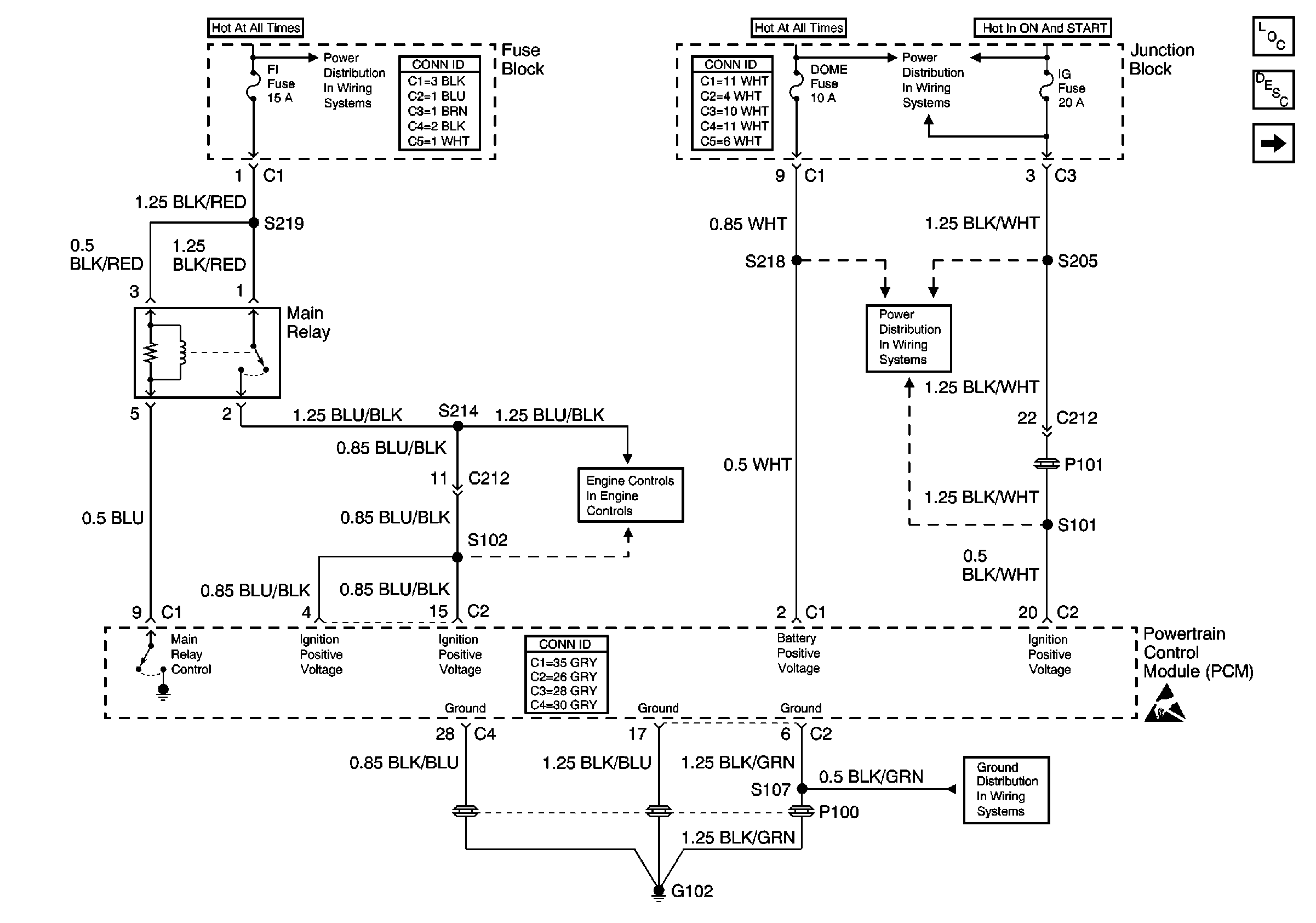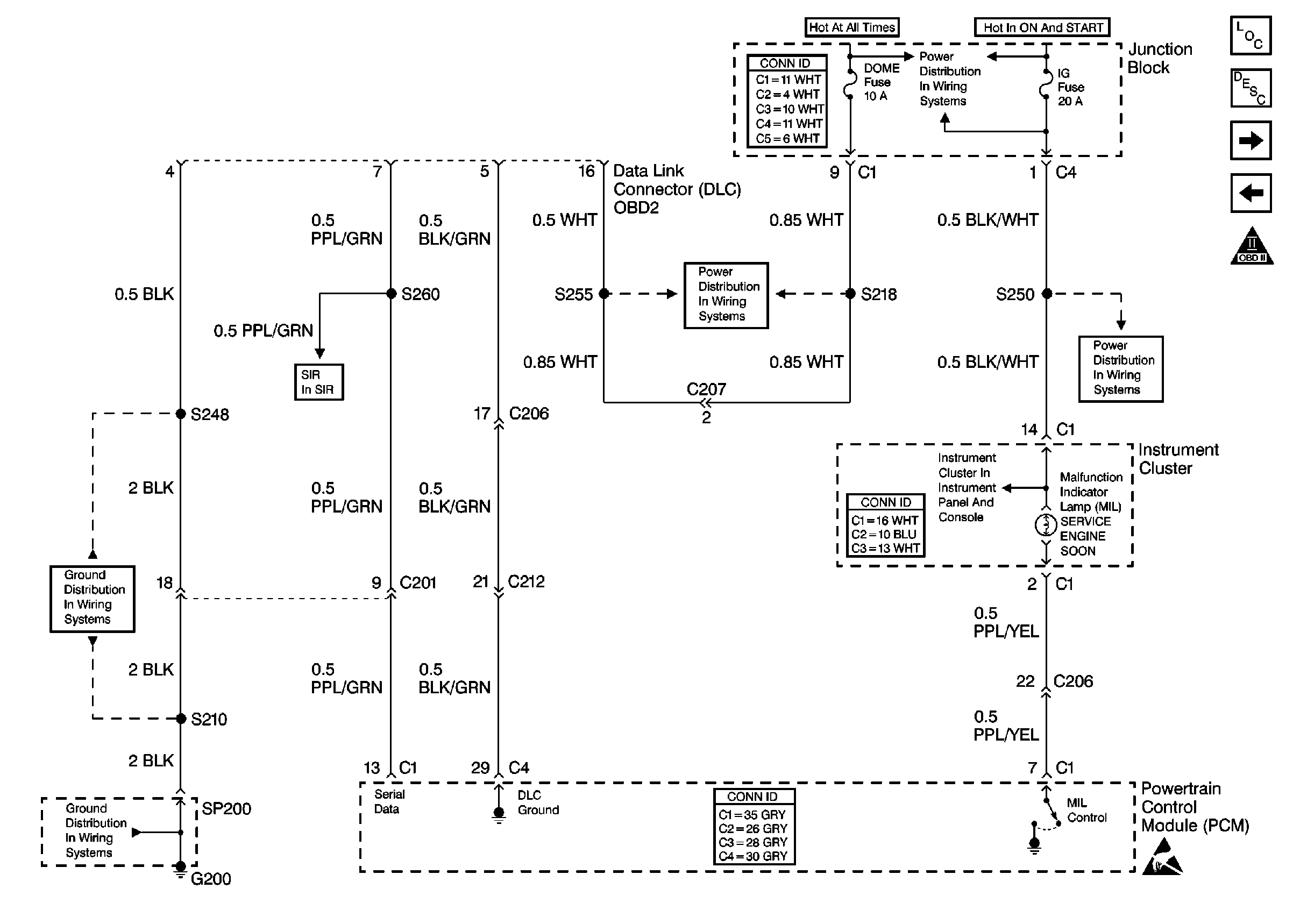Power and Ground

and
MIL and DLC

.
Description
The Powertrain OBD System Check is an organized approach to identifying a problem created by an electronic engine control system malfunction. The Powertrain OBD System Check is the starting point for any driveability concern diagnosis because the system check directs the service technician to the next logical step in diagnosing the concern. Understanding and using the table correctly will reduce diagnostic time and prevent the replacement of good parts.
Do not perform this check if a driveability concern is not present.
Diagnostic Aids
An intermittent malfunction may be caused by a fault in an engine control system electrical circuit. Inspect the wiring harness and components for any of the following conditions:
| • | Backed out terminals |
| • | Improper mating of terminals |
| • | Broken electrical connector locks |
| • | Improperly formed or damaged terminals |
| • | Faulty terminal to wire connections |
| • | Physical damage to the wiring harness |
| • | A broken wire inside the insulation |
| • | Corrosion of electrical connections, splices, or terminals |
Test Description
The numbers below refer to the step numbers in the diagnostic table.
-
Do not perform the Powertrain OBD system check unless one of the concerns observed is present. Failure to follow this procedure could lead to a misdiagnosis of the system.
-
The MIL should be on steady with the key ON and the engine OFF.
-
This step checks if the PCM and the scan tool can communicate (serial data).
-
This step checks if the vehicle will start.
-
Before proceeding to the applicable DTC table consider all of the items below:
| • | Check for related service bulletins. |
| • | If multiple DTCs are stored, refer to the DTC tables using the following priority: |
| 1. | PCM error DTC P0601 |
| 2. | System voltage DTCs |
| 3. | Component level DTCs (sensors, switches, relays, output drivers, etc.) |
| 4. | System level DTCs (Misfire, Fuel trim, HO2S lean or rich, etc.) |
| • | First failures of Type B DTCs will store in Last Test Failed, but not in the History. When the MIL is on and a DTC is displayed in the History, a current fault is indicated. |
| • | Transmission DTCs are not located in this section. Refer to Automatic Transmission for Diagnostic Information and Procedures. |
| • | If the scan tool is unable to record DTC information, then record the DTC information on paper. |
-
This step detects a MIL circuit shorted to ground.
-
Before proceeding to Symptoms or Diagnostic Information and Procedures, check for related service bulletins. The diagnostic tables in this section are designed for use with a properly functioning scan tool. If a faulty scan tool is suspected, connect the scan tool to another vehicle in order to verify operation. Correct the serial data communications before beginning any other diagnostic procedure. OBD II serial data may not transmit if the vehicle battery voltage is below 9.0 volts or above 16.0 volts. Do not clear the DTCs unless directed by a diagnostic procedure. Clearing the DTCs will also clear valuable Freeze Frame/Failure Record data.
Powertrain On-Board Diagnostic Check
Step | Action | Value(s) | Yes | No | ||||||||||||
|---|---|---|---|---|---|---|---|---|---|---|---|---|---|---|---|---|
|
Important:
Check for one or more of the following conditions:
Did any of the above conditions apply? | -- | System OK | ||||||||||||||
Is the MIL illuminated? | -- | |||||||||||||||
Does the scan tool display any PCM data? | -- | |||||||||||||||
Start the engine. Did the engine start and run? | -- | |||||||||||||||
Observe the DTC information. If any DTCs are set, save the DTC and the Freeze Frame/Failure Record information. Were any DTCs set? | -- | Go to Test Description | ||||||||||||||
Is the MIL ON with no DTCs set? | -- | |||||||||||||||
Compare the scan tool data display with the data values shown in the Engine Scan Tool Data List. Are the displayed values normal or within the typical values range? | -- | Go to Symptoms | Go to Diagnostic Aids of the DTCs related to that component |
